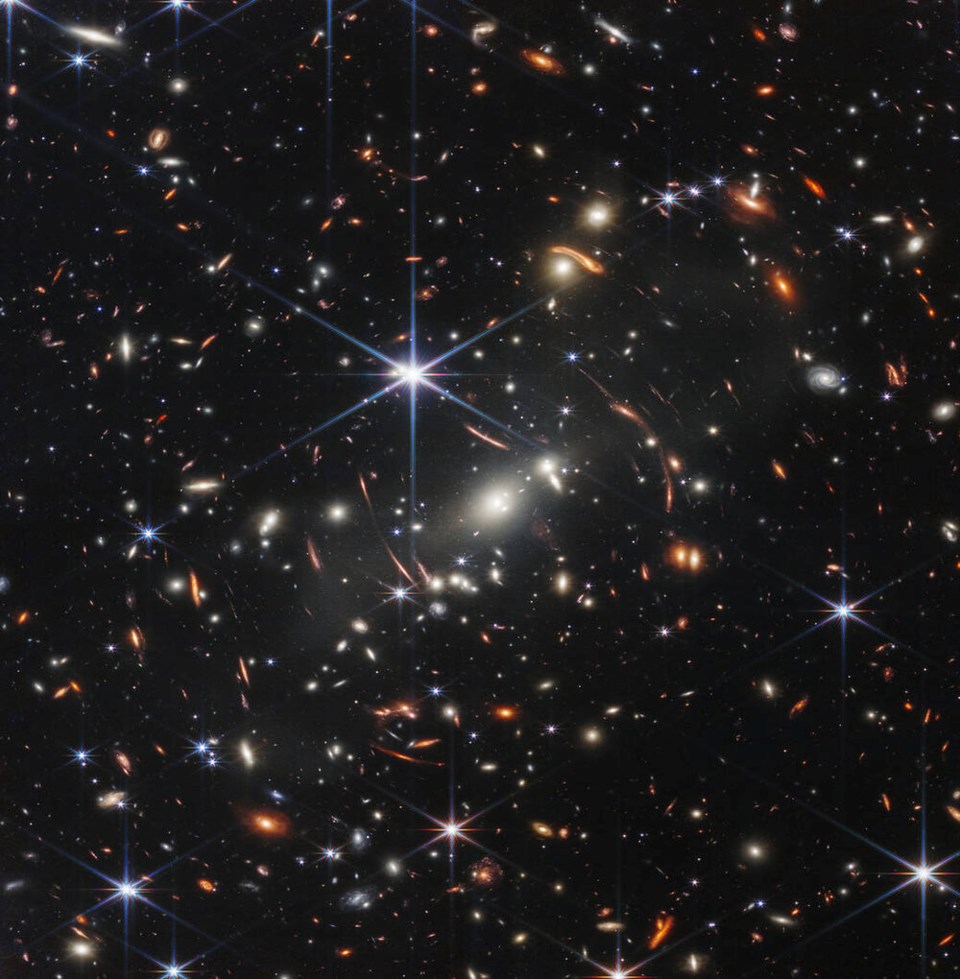If you were to look up, it would cover a patch of sky the size of a grain of sand held at arm’s length.
But thanks to a new $10-billion James Webb Space Telescope — a joint project between the National Aeronautics and Space Association (NASA), Canadian Space Agency (CSA), European Space Agency (ESA) and the Space Telescope Science Institute — humanity has now caught the most detailed view of the early universe to date.
On Monday, U.S. President Joe Biden released the image, a near-infrared view of distant galaxies.
The composite image shows thousands of galaxies in a cluster that appeared 4.6 billion years ago and has since been labelled by scientists as SMACS 0723.
It took over 12.5 hours to capture the image. With the Hubble Space Telescope — James Webb’s predecessor — capturing that same depth of infrared wavelengths would have taken weeks.
This is just the first in a series of images set to be revealed over the next 24 hours. On Tuesday, July 12, at 7:30 a.m. PST, NASA will release four more images.
James Webb Space Telescope was launched in December 2021 after multiple delays and cost overruns. It now circles the Earth at an orbit of 1.6 million kilometres, allowing it to achieve the sharpest images of the most distant reaches of the galaxy to date.
It represents the culmination of decades of work across 13 countries. Canada’s contribution to the space telescope includes a fine guidance sensor, which allows it to locate celestial targets, track moving objects and keep a steady, focused lock with high precision.
The Canadian-built Near-Infrared Imager and Slitless Spectrograph (NIRISS), meanwhile, will use a camera — highly sensitive to infrared wavelengths — to help scientists study the atmospheres of exoplanets and observe distant galaxies.
“With the Webb Telescope, scientists will be able to determine if distant planets could be habitable based on whether or not their spectra show lines associated with certain molecules like water, carbon dioxide, methane and oxygen in their atmospheres,” notes the Canadian Space Agency.
Because of the time it takes light to travel, the telescope will be able to look deep into the past — only 200 million years after the event that began the entire universe.
As NASA put it: “Webb will solve mysteries in our solar system, look beyond to distant worlds around other stars, and probe the mysterious structures and origins of our universe and our place in it.”
Some of those mysteries could come out of nowhere. In 1990, when Hubble was launched, the concept of did not exist.
“Now it is one of the most exciting areas of astrophysics,” notes the telescope’s own website.



